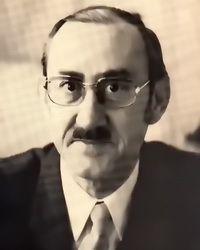 |
|
After completing his degree in Chemical Technology at the Delft University of Technology, Leo Stuijts became a research scientist at the Philips Research laboratories in Eindhoven, the Netherlands. In this laboratory he was involved in pioneering work to extend the use of ceramics beyond their traditional applications into entirely new sectors. A notable example was the development of BaFe12O19 and the other hexagonal ferrites, which were produced by Philips and which won renown as permanent magnets under the name” ferroxdure”. As leader of the research group, Technology of Metals and Ceramics, he fostered a team of research colleagues (including Kools, Reijnen, De Lau, Peelen, and Oudemans); this group made a sequence of advances in the design and processing of ceramics, which achieved international recognition and which have retained their significance to the present day. Each advance (powder processing, sintering, continuous hot pressing, preparation of translucent oxides) was accompanied by an understanding of the underlying science which gave great confidence in the merits of the progress made. A crucial contribution was made by the personal qualities of Leo. He led his team with sympathetic guidance, always concerned for the contribution which each colleague could bring. There are many in the international research community who have benefited from the kindness, the humour and wisdom of Leo as he tried to guide them at critical stages in their professional development. In 1968 he became Professor Extraordinary at the Eindhoven University of Technology. He was a Fellow of the American Ceramic Society where he delivered the 1977 Sosman Memorial Lecture. In the same year he became Honorary Member of the International Institute for the Science of Sintering. The European Ceramic Society recognised him as the outstanding individual for the promotion of research collaboration in Europe and more widely by its establishment of the Stuijts Award; this is presented at the biannual ECerS Conference to “a ceramist belonging to a member country of the Society for outstanding contributions to ceramic science, technology and educational activities and production”.
Leo Stuijts contributed in an important way to the acknowledgement of the effect of ceramic microstructures on the final properties of ceramics both in and outside the field of ceramic science. That the notion 'microstructure' is accepted now was certainly not self-evident 30 years ago. Leo Stuijts, knew the importance of microstructures and consequently of the importance of technological factors. He considerably contributed to the development of the science and technology of magneto-ceramic and electro-ceramic materials.

